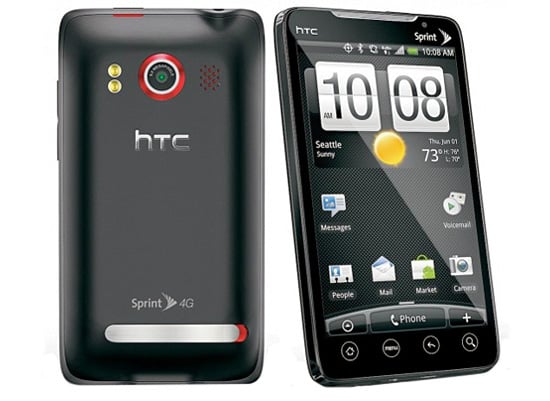HTC EVO 4G - 4G vs 3G, A Tale of The Tape
Introduction & Specifications
 Sprint's marketing campaigns over the past few months have focused on the fact that the carrier was the first to launch a 4G network in the U.S. Building on that, the company has focused on the various things you can do with a 4G connection that weren't possible (or at least weren't very usable) without a fourth generation high-speed mobile broadband connection.
Sprint's marketing campaigns over the past few months have focused on the fact that the carrier was the first to launch a 4G network in the U.S. Building on that, the company has focused on the various things you can do with a 4G connection that weren't possible (or at least weren't very usable) without a fourth generation high-speed mobile broadband connection.
In keeping along with the "first" concept, Sprint announced the HTC EVO 4G—the world's first 3G/4G Android smartphone, would be available on their network. Although the EVO 4G may no longer be the only 3G/4G handset around (it has since been joined in Sprint's lineup by the Samsung Epic), the EVO 4G is still only one of two phones that offers users the ability to surf the web at 4G speeds (where available).

According to Sprint, its 4G WiMAX network offers peak download speeds of more than 10Mbps and peak upload speeds of 1Mbps. Since you probably won't get "peak" performance all of the time, Sprint says average download speeds range from 3 to 6 Mbps. When a 4G network is not available, the EVO will connect to Sprint's 3G network which offers average download speeds of 600kbps – 1.4Mbps.
Sprint was also one of the first carriers to roll out the Android 2.2 upgrade to users. Android 2.2, also known as Froyo, brought a number of feature enhancements such as voice dialing over Bluetooth, the ability to store applications on external memory cards, 4-way camera rotation, better web browsing with a faster JavaScript engine and Flash 10x support, and more.
The EVO 4G comes with a price tag that's in line with other high-end smartphones: $199.99 after applicable discounts and with a two-year contract. There is one important caveat, however. Because this phone supports 4G speeds, Sprint will add a $10 per month “Premium Data” service fee to your bill. This is also true for the Samsung Epic, and we'd expect it to be the trend for all future 3G/4G smartphones from Sprint. Sprint also offers an optional Mobile Hotspot feature that lets you share your high-speed Internet connection with up to eight Wi-Fi devices. This feature costs an additional $30 per month.
There are various plan options available for the EVO 4G. The least expensive option costs $69.99 per month. When all is said and done and you factor in taxes and fees, you'll likely spend about $90 per month for the EVO 4G. Really, this isn't all that unusual for a smartphone, but it's still worth considering regardless of your budget.
Early adopters certainly took notice of the EVO 4G, but now that some of the dust has settled, should you still consider the phone? Read on as we answer this question and many more about the HTC EVO 4G from Sprint in our hands-on review.
HTC EVO 4G Specifications
|
CPU |
1 GHz Qualcomm Snapdragon QSD8650 processor |
|
Platform |
Android 2.2 and HTC Sense experience |
|
Memory |
1GB ROM/ 512MB RAM 8GB microSD card included |
|
Dimensions |
4.8 x 2.6 x 0.5 inches |
|
Weight |
6 oz with battery |
|
Display |
4.3-inch WVGA resolution Capacitive Multi-touch Screen |
|
Network |
CDMA 800/1900 MHz EVDO Rev. A, WiMAX 2. 5 to 2.7GHz; 802.16e |
|
GPS |
GPS/aGPS |
|
Connectivity |
Bluetooth 2.1 Wi-Fi 802.11 b/g microUSB HDMI output FM radio 3.5mm headset jack |
|
Cameras |
8 megapixel with Auto Focus and 2x LED Flash 1.3 megapixel fixed focus front facing camera |
|
Battery |
Removable 1500 mAh Li-on Up To 6.0 hours continuous talk time |
|
Additional Features |
Mobile Hotspot capable, Friend Stream, HTC Sync, HTC Sense, Amazon MP3, built-in kickstand, Visual Voicemail |
|
In-Box Content |
HTC EVO 4G Standard Lithium Ion Battery AC Charger Micro USB Cable MicroSD Card - 8GB included |







